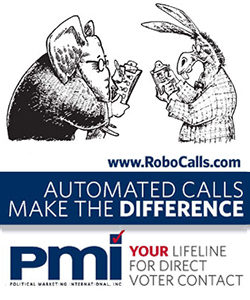(by Rick Manning) – Congress has a unique opportunity to spend time without the pressure of various cliffs and shutdown deadlines to create a pathway to a more free-market-oriented agriculture policy over the next few years with the contentious 2014 farm bill out of the way.
To help this process of getting the federal government off of the farm, Americans for Limited Government Foundation asked J. Wesley Burnett of the College of Charleston to create a report outlining some of the regulatory, tax and foreign policy stumbling blocks to getting agriculture off of the government dole.
The resulting study, “Moving to A Free Market Agriculture Policy,” identifies a number of factors ranging from environmental regulation to U.S. tax laws to foreign government subsidies as contributing to either the costs of doing business or the competitive price points for agriculture products.
One example Burnett cites is the Environmental Protection Agency’s (EPA) attempt to expand the scope of the Clean Water Act to cover the family farm as one of the primary regulatory threats to sustainable farming. Breitbart News quotes Rep. Kevin Cramer (R-N.D.) as calling the EPA’s regulatory assault as “trying to regulate every puddle on every farm and ranch, as well as making it harder for producers to feed the world with the continued safe use of pesticides.”
Burnett also pinpoints efforts by Rep. Ted Yoho (R-Fla.) to create a third way for dealing with sugar subsidies as a new approach to the agriculture subsidy issue. Yoho has introduced legislation known as “zero for zero,” which would trigger the elimination of U.S. sugar subsidies contingent upon other major sugar producers doing the same. Passage of Yoho’s bill would give trade negotiators a powerful anti-subsidy weapon as they could point to the U.S. having already taken action.
Congress’s decision to abandon Depression-era farm supports — where farmers were paid not to farm — in the 2014 farm bill is a step in the right direction.
The current federal agriculture support system is almost entirely built around taxpayer-supported crop insurance, which requires that beneficiaries pay a portion of their premiums and shoulder part of losses as a deductible. Even with subsidies that lower insurance premiums, farmers collectively contribute about $4 billion a year toward their overall insurance costs. While this doesn’t cover the cost of the program, it is a beginning point toward weaning agriculture off of public assistance.
It seems clear that during the next three years, Congress has a window to fix government regulations and taxes — like foreign subsidy issues and the estate tax, which disproportionately hurts those with large land holdings. If they aggressively pursue efforts to clear the government-induced costs to the agriculture community, it is likely to create a pathway toward a more free-market, self-sufficient agriculture policy.
Burnett has blazed a trail for Congress to follow. It is now up to those who support free-market policies to encourage Congress to pursue it now, before the reauthorization cycle begins
Manning is president of Americans for Limited Government. This column was originally published by The Hill on April 15, 2015.


